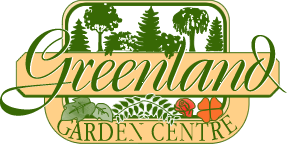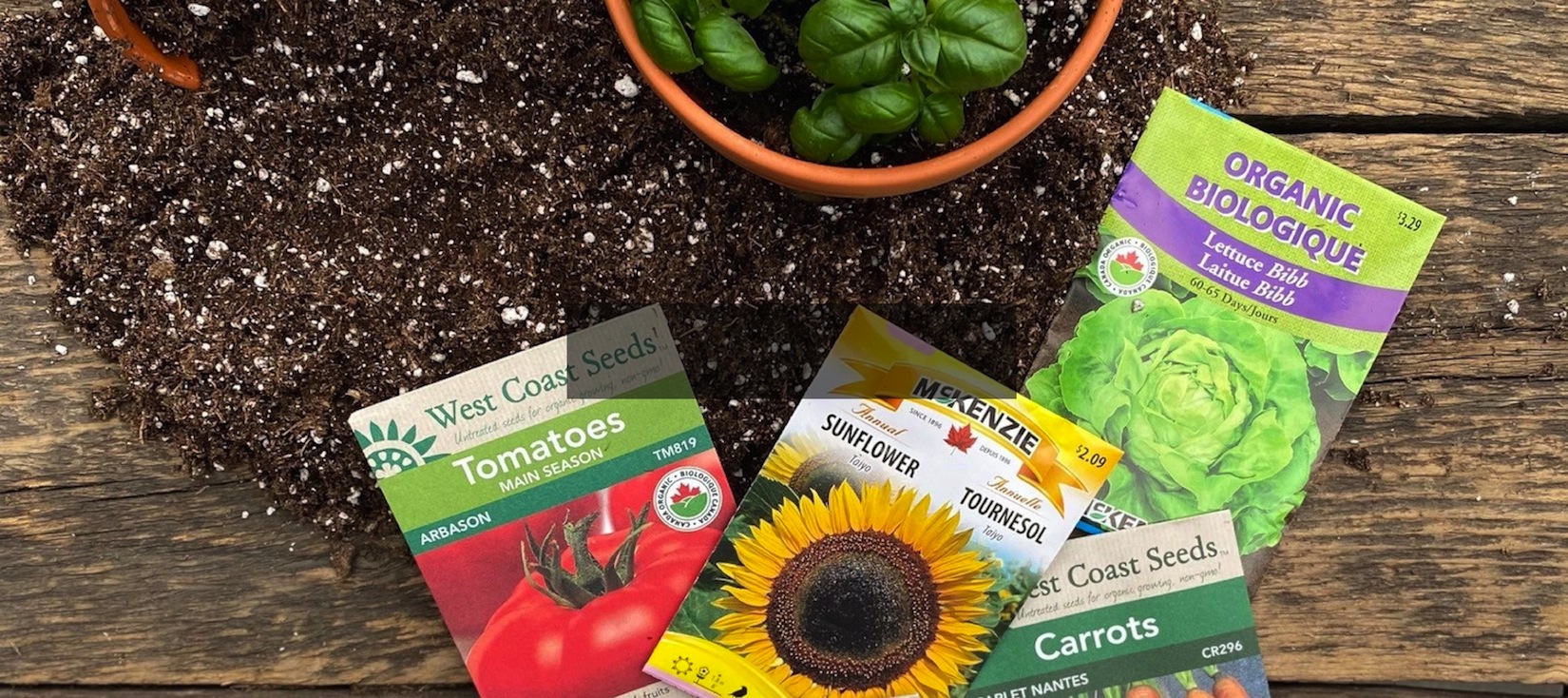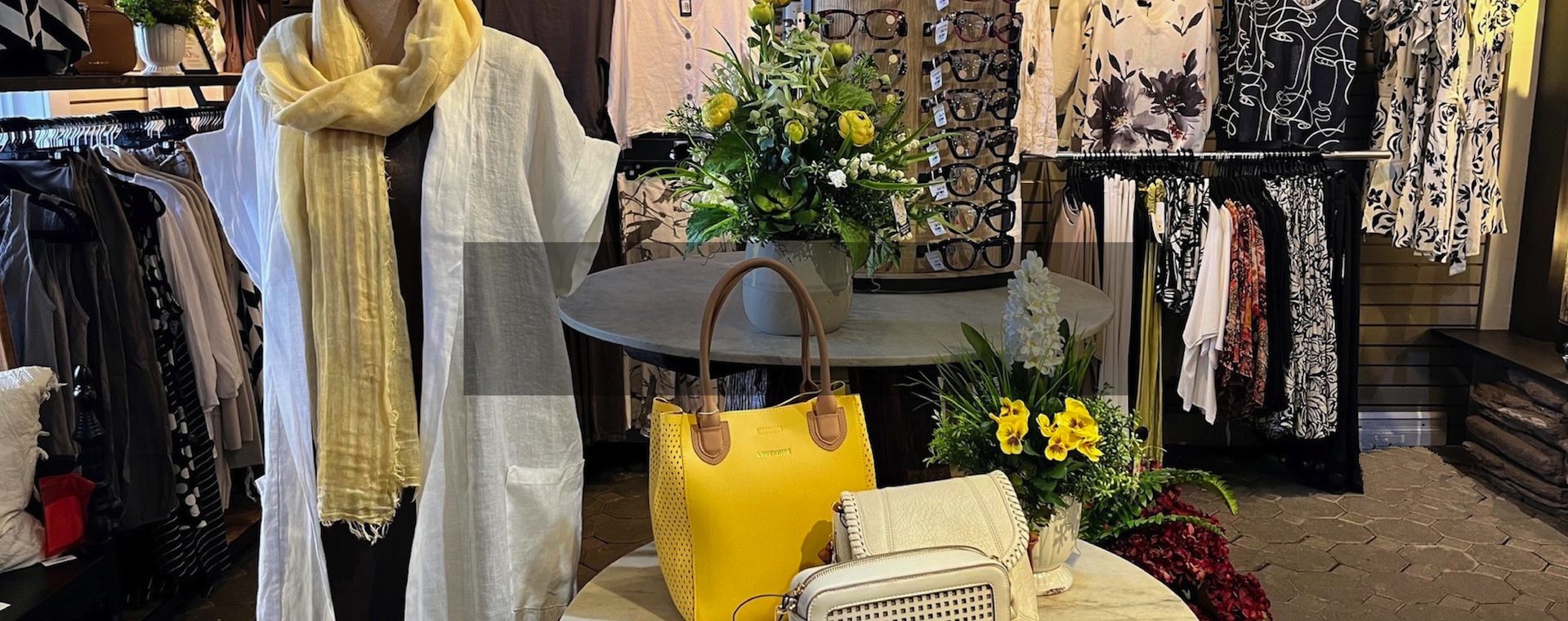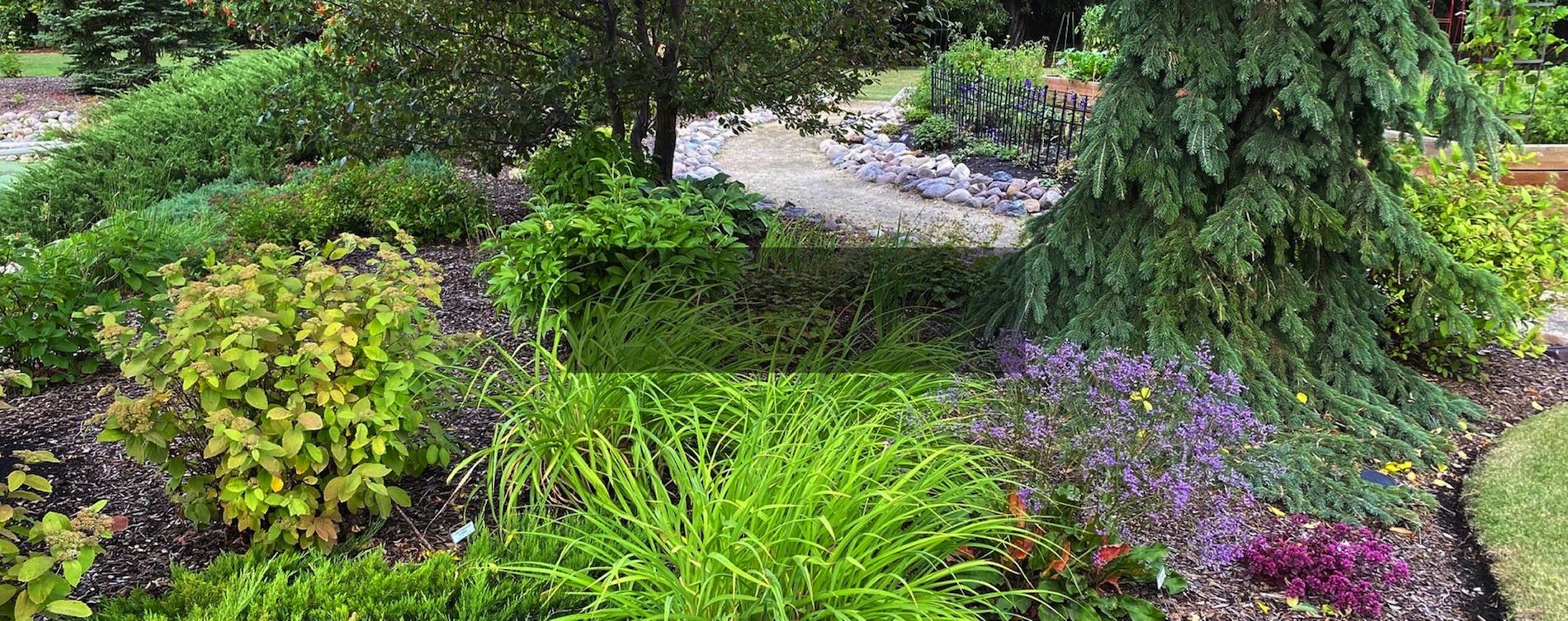Cover More Ground With Mat Forming Perennials
Joe Gadbois, March 19, 2024

Welcome back to the garden blog! This week’s topic is groundcovers. A groundcover is a low-growing plant that grows much wider than it does tall. This is a category of perennial that doesn’t seem to fade in popularity. Why would you want to plant groundcovers? They have several potential uses:
- Weed suppression
- Erosion control
- Growing between stones in a garden path
- Lawn substitution (foot traffic tolerance varies by plant)
- Growing between rocks in rock gardens
Those first two points are key – many people are simply looking for efficient ways to cover the soil to prevent weed and erosion problems, and perhaps they don’t want the extra maintenance of a lawn and would prefer not to simply cover the soil with landscape fabric and mulch or rocks. Most mat forming groundcovers are evergreen and don’t require mowing or cutting back. But what are the best plants to use for these purposes in Alberta? Read on!

I’ll start with the most popular choice: creeping thyme (Thymus spp.). Related to culinary thyme, ornamental types have aromatic foliage that creeps along the ground, rooting into the soil wherever it comes in contact. Pretty summer blooms are a favourite of bees. A few favourites of mine are ‘Coccineus’, with showy magenta-red flowers; woolly thyme (T. pseudolanuginosus) is a vigorous grower with grey-green felted leaves and pink flowers; and ‘Elfin’ has a tighter growth habit which makes it one of the best plants for putting between stones in pathways.
All varieties of creeping thyme require well-drained soil and are good choices for hot, dry, sun baked locations, and they are the best choice for areas with higher foot traffic.
I first became interested in groundcovers following my discovery of my second love in the plant world (after orchids), alpine plants. Indeed many alpine plants (those which come from high elevation areas in the mountains) make some of the finest groundcovers, and coming from extreme climates they tend to be well-suited to our own flavour of extreme climate. One cannot speak of alpine groundcovers without mentioning trumpet gentian (Gentiana acaulis)!

Trumpet gentian is a mat forming perennial that produces glossy evergreen foliage, which in spring is covered in large, trumpet shaped flowers of the most startling deep blue. The inside of the blooms is coloured green and white, spotted with blue. This is not a plant that is sold at every garden centre, but we carry it in our perennials department at Greenland every year. If you like blue flowers, it’s a must-have. Plant it in a sunny position and amend your soil with compost and coarse sand or fine grit, as it needs sharp drainage. It will need watering during hot and dry periods but more than repays the small effort.

Another group of plants commonly found in alpine and rock gardens which make great groundcovers are the speedwells (Veronica spp.). Speedwells come in two basic flavours: upright, clump-forming types with spikes of blooms, and mat forming types with clusters of flowers. Of the mat forming types, whitley’s speedwell (Veronica whitleyi) is my favourite. Similar to woolly thyme, the foliage is covered in a grey felt, but in this plant the masses of summer blooms are a soft blue colour. It’s drought tolerant and does well in sun-baked locations, but make sure the soil has excellent drainage. It tolerates some foot traffic. I have had trouble sourcing this plant the past couple years, but we will have it at Greenland this spring.

A really choice alpine plant which is native to the Alberta Rockies is moss campion (Silene acaulis). While admittedly this is a slower growing plant and sometimes forms more of a cushion than a mat, I still consider it a groundcover and it can either be mass planted, or would make a great candidate for pathways. The tightly packed, mossy leaves are pleasing to the eye, and are dotted with pink flowers in spring to early summer. This plant requires sharp drainage but will need some water during hot and dry periods, although it does love full sun.

There are two species of mountain avens (Dryas spp.) that can also be found growing wild in the Alberta Rockies, white mountain avens (D. octopetala) and yellow mountain avens (D. drummondii). Both have long been favourites of mine. They bloom in spring, with attractive fluffy seedheads appearing afterwards. The leathery, evergreen leaves turn orange and red in fall. Again requiring sharp drainage, they have better drought tolerance than moss campion and are easy to grow. Highly recommended – we will have them available at Greenland this spring for the first time in a long time!

For hot and dry areas, succulent plants such as the stonecrop (Sedum spp.) are obvious choices. Stonecrop is another plant that comes in upright or mat forming types. Dragon’s Blood (‘Fuldaglut’) is one of the best groundcover types as the foliage develops a nice red blush in the hot sun, and it also has showy pink flowers in the summer which bees love. ‘Tricolor’ and ‘John Creech’ are similar to Dragon’s Blood, but the former has tricoloured green, white, and pink leaves, while the latter has plain green foliage. The Russian stonecrop (S. kamtschaticum) is a bulletproof choice and one of the most vigorous varieties; there is also a variegated form. It produces yellow flowers in summer. Finally, ‘Angelina’ is another vigorous option with needle-like, bright yellow foliage which will develop a bit of a red blush in hot and dry conditions.
All stonecrops need good soil drainage to prevent rot!

I simply couldn’t be without creeping phlox (Phlox spp.). There are numerous varieties available, all of which form a mat of needle-like evergreen foliage. Masses of pinwheel shaped, fragrant flowers smother the plants in spring to early summer. These thrive in hot, dry conditions and require excellent soil drainage. A few of my favourite varieties are ‘Violet Pinwheels’, ‘Phlox Trot Pink’, the Spring Series, and the Rocky Road Series. If you can get ahold of it, ‘Crackerjack’ is a choice variety as well; we occasionally have it available at Greenland.

If you need a groundcover for shade, two of the most efficient are lily-of-the-valley (Convallaria majalis) and lamium (Lamium maculatum). Lily-of-the-valley takes some time to establish, but be warned it can be hard to get rid of once it’s settled! It spreads by creeping underground rhizomes. The small white flowers in spring have a heavenly scent, but yes, this plant is poisonous. There is a pink flowered form, as well as some rare varieties that may have gold leaves (‘Fernwood’s Golden Slippers’) or creamy-yellow striped leaves (‘Albostriata’).
You can’t go wrong with any variety of lamium, which have attractive foliage that may be splashed silver (‘Pink Pewter’) or gold (‘Anne Greenaway’). The helmet shaped flowers appear continuously from spring to fall, and come in shades of white, pink, or purple. This plant has a mounded habit, but the stems will root wherever they touch the soil, and plants will seed themselves as well. Both lily-of-the-valley and lamium are tolerant of dry shade and are very easy to grow.

My final recommendation, before I take up far too much space on this page, is bugleweed (Ajuga spp.). This mat or cushion forming perennial is sold as a shade plant but it will also take some sun, where the foliage colour will be more intense. ‘Black Scallop’ and ‘Chocolate Chip’ are classic varieties with deep burgundy-black foliage, but check out the Feathered Friends Series and the new varieties ‘Princess Leia’ and ‘Princess Elsa’ for different foliage colours, which provide great colour contrast all season. All bugleweed varieties produce short spikes of deep blue flowers in spring which will attract pollinators.
We have only scratched the surface of great perennial groundcovers for Alberta, so I’d encourage you to come visit us at Greenland this spring, and our perennials staff would be happy to show you more great groundcovers to add to your garden!





